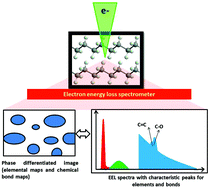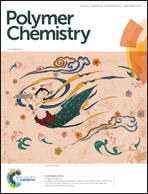Electron energy loss spectroscopy for polymers: a review
Abstract
Ultrastructural determination of polymers, their blends, and composites is important for the understanding of structure–property relationships. Transmission electron microscopy (TEM) is a key tool for direct imaging of a structure at micro and nanoscales, but often has contrast problems with polymer systems. Traditional solutions involve the use of heavy element stains to generate contrast. Advancements in electron microscopy such as Electron Energy Loss Spectroscopy (EELS) have enabled spectroscopic measurements directly in TEM, resulting in high contrast and spatial resolution, without staining. Here, an extensive review of EELS of polymeric systems is presented. After a brief overview of EELS, its use in polymer systems including that in single and multiphase systems is described. Issues related to appropriate sample preparation and beam degradation of polymers are addressed and advantages of EELS to achieve spectroscopic characterization of polymer systems with high spatial resolution are highlighted. It additionally illustrates the different approaches that have been used to gain a deeper insight into the polymeric structure and the synthetic routes towards it.



 Please wait while we load your content...
Please wait while we load your content...